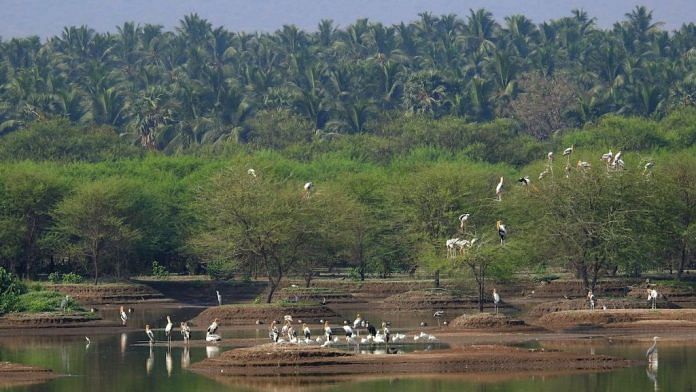- Biodiversity loss is threatening around a million plant and animal species, food security, human health and economic output.
- The Post-2020 Global Biodiversity Framework (GBF) is a United Nations-led initiative to tackle its root causes and could have a similar impact as the Paris Agreement.
- Set to be finalized in early 2022, the GBF’s draft sets out targets for protecting marine and land habitats, reducing pesticides and plastic waste, and increasing investments.
- This alone may not suffice to halt biodiversity loss, and the WWF wants to include a milestone for halving human production and consumption in the GBF.
The Paris Agreement on climate change has become a rallying point for global efforts to rein in global warming since its adoption in 2015. Another United Nations-led initiative that could have the same impact for biodiversity is set to be finally agreed in Spring 2022.
The Post-2020 Global Biodiversity Framework (GBF) will set 21 targets and 10 milestones for governments to meet by the end of the decade. These include protecting a minimum of 30% of the world’s oceans and land, reducing pesticide use by at least two-thirds, eliminating plastic waste, and increasing financial resources dedicated to biodiversity to at least US$ 200 billion annually.
As the delayed COP-15 conference for the adoption of the framework approaches, the World Wide Fund for Nature (WWF) has highlighted that some more drastic measures may be needed to fight the decline of biodiversity. With around one million plant and animal species at risk of extinction, threatening food security, human health and economic output, the WWF is asking decision-makers to include a milestone for halving human production and consumption.
39 million new jobs supporting biodiversity
In a new report, the WWF singles out unsustainable production and consumption as the main drivers in biodiversity loss. It attributes these mainly to consumers in high-income countries but also increasingly in middle-income economies as these emulate western consumption patterns.
Habitat loss is mostly caused by agricultural expansion and new infrastructure, the WWF finds. It cites overexploitation through unsustainable forestry and overfishing; inefficient agricultural land use; and pollution through manufacturing and extractive industries as key areas to tackle as a priority.
The report states that $500 billion in existing government subsidies for activities that are harmful to biodiversity should be redirected to activities that will improve biodiversity.
Redistributing these funds equitably between countries could create 39 million new jobs in “nature-positive” sectors, especially in less developed markets in east Asia-Pacific, South Asia and sub-Saharan Africa, the WWF says.
Also read: Global trade needs to go back to the basics to bring inclusive recovery
Sustainable improvements for many habitats and species
Among the improvements that could be made in this way, the WWF report cites the following:
- The restoration of coastal habitats that provide flood protection to up to 300 million people in the world.
- Overhauling the world’s food systems to make them more sustainable and adopting more planet-friendly diets.
- Lowering red meat consumption, as meat production not only threatens the climate and the animals we eat but could wipe out thousands of species over the next few decades.
- Changing our diets would also reduce land use and offer health benefits such as halving the occurrence of diabetes.
- Introducing circular economy models on a wide scale to avoid pollution could add $4.5 trillion to global GDP and create millions more jobs.
More funding needed
Reallocating savings from misdirected subsidies alone will not make a dent in the continued loss in biodiversity. A study from the United Nations Environment Programme (UNEP) published earlier this year underlined that total investment in nature will need to triple by 2030 and nearly quadruple by 2050, to $8.1 trillion.
Beyond agreeing the new targets, it will be critical to mobilize these funds from a mix of public and private sources. As with the Paris Agreement, this will mean not just pledges but decisive action from governments, private equity, multilaterals and other investors. All of this will need to happen in an even shorter timeframe than for the Paris Agreement, which has been in operation for significantly longer.
The data from WWF and UNEP should provide another layer of evidence that the economics of investing in biodiversity are sound, and a win-win for everyone involved.
Andrea Willige, Senior Writer, Formative Content
This article was originally published on the World Economic Forum (WEF).
Also read: The urban redesign that will shape future cities



